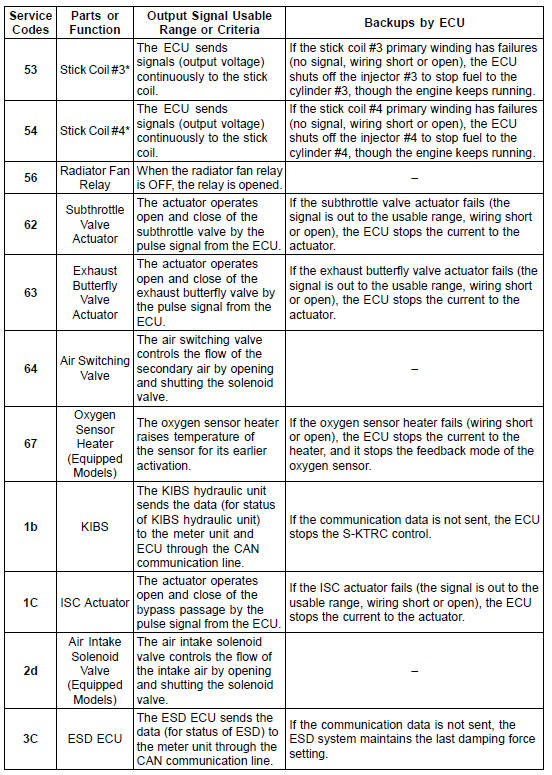





Note:
(1): D-J Method: When the engine load is light like at idling or low speed, the ECU determines the injection quantity by calculating from the throttle vacuum (vacuum sensor output voltage) and engine speed (crankshaft sensor output voltage). This method is called D-J method.
(2): α-N Method: As the engine speed increases, and the engine load turns middle to heavy, the ECU determines the injection quantity by calculating from the throttle opening (throttle sensor output voltage) and the engine speed. This method is called α-N method.
*: This depends on the number of stopped cylinders.
The main throttle sensor is a rotating variable resistor that change output voltage according to throttle operating. The ECU senses this voltage change and determines fuel injection quantity, and ignition timing according to engine rpm, and throttle opening.
Input Terminal [A]: BL Output Terminal [B]: V/W Ground Terminal [C]: BR/BK

 Service Code Erasing
Service Code ErasingAir Intake Solenoid Valve (Service Code 2d, Equipped Models)
Air Intake Solenoid Valve Removal/Installation
Refer to the Air Intake Solenoid Valve Removal/Installation
in the Fuel System (DFI) chapter.
Air Intake Solenoid Valve Inspection
Refer to the Air Intake Solenoid Valve Unit Test in the
Electrical System chapter.
If the air intake ...
Current Mileage
This display mode shows the current
mileage by numerical value. The current
mileage display is renewed every
4 seconds.
A. Current Mileage
B. “km/L”
NOTE
The display unit modes can be
changed, refer to the “Unit Setting”
item in this section.
The numerical value shows “ ...
Fuel Pump Removal
WARNINGGasoline is extremely flammable and can be
explosive
under certain conditions, creating the
potential for serious burns. Make sure the area is
well-ventilated and free from any source of flame
or sparks; this includes any appliance with a pilot
light. Do not smoke. T ...